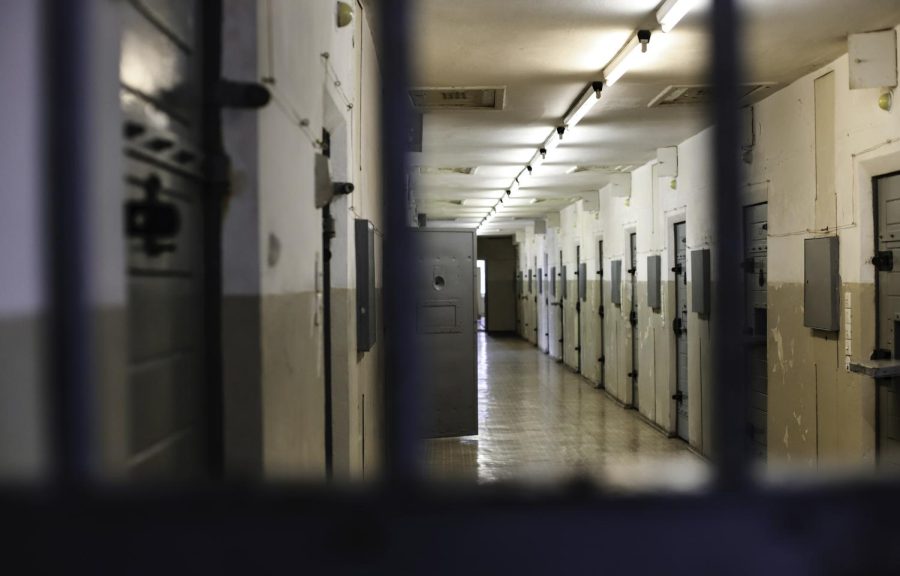When the Jail Fills Up
The Whatcom County Jail is overpopulated.
The number of people involved with the correctional system in Whatcom County increased 150% during the past year. An average of 330 people are currently incarcerated at any given time, the majority of whom are locked up in the Whatcom County Jail. This poses an issue for a facility with a maximum capacity of 212.
Deb Slater, program specialist and outreach coordinator for the Whatcom County Sheriff’s office, summarized the factors that have led to the current state of the jail in a written statement to the Spectator.
“Challenges such as the COVID epidemic; the partial and/or full closure of courts and other offices necessary for the functioning of the courts… and the continuing failure in the jail infrastructure needed for safe operation have led to the current overcrowding situation at the Whatcom County Jail,” Slater wrote.
The factors Slater mentions are largely unrelated to the correctional system itself or the actions of law enforcement, and are instead issues with court proceedings.
Gabrielle Fischer, a legal intern at the Whatcom County Public Defender’s office, agrees that many of the overcrowding issues are connected to the legal system.
“I think a lot of [jail overcrowding] lies within the court system and prioritizing cases and people that actually pose a risk to society,” Fischer said. “I don’t think the ratio is as high as the number of people in jail right now.”
Prosecuting more cases increases jail populations in multiple ways. If individuals are assigned more jail time, the population increases. However, the larger impact comes from pandemic-extended holding times for pre-trial detainees.
Robert Lewis of calmatters.org documented the ordeal of DeAngelo Davis, who at the time of writing had been in jail for 651 days without a trial or preliminary hearing. He cites CalMatters’s ‘Waiting for Justice’ investigation which uncovered more than 1,300 Californians who had been held for three years or longer without trial.
This is not a problem unique to California, or to a single jail system. In other jurisdictions, individuals are also being kept in custody for lengthy periods of time.
“Prosecutors choosing to prosecute cases that they don’t need to increases the number of people in jail,” Fischer said.
Homeless people are one group enormously impacted by jail overcrowding. The Vera Report states that the risk of a transient person being arrested is 11 times greater than a housed person. Because many experiencing homelessness lack the ability to bail themselves out of jail, they run the risk of being locked up for months on minor charges. Overcrowding exacerbates issues in marginalized communities, where prison systems stretched to their limit are unable to accommodate different needs.
Hans Erchinger-Davis, the president and CEO of the Lighthouse Mission, a faith-based organization dedicated to helping homeless and transient individuals. The Mission runs a shelter in Bellingham, Wash. that houses hundreds of people in addition to providing meals, showers, employment assistance and other services for low-income residents of Whatcom County. He believes that current strategies hoping to combat homelesness are making it harder for organizations such as Lighthouse Mission to help community members.
“Some of the underlying reasons causing homelessness aren’t being addressed,” Erchinger-Davis said. “It’s more housing-first solutions, but right now that’s an impossible aim to accomplish. It’ll take twenty years to pull off, and in the meantime there’s very little shelter for people out there.”
Often, police reform is cited as a solution for these issues. However, Erchinger-Davis cautions against a full reformist approach.
“Policy change in the last year has limited the ability for police officers to engage folks having a mental health crisis,” Erchinger-Davis said. “We could work with somebody who had complexities about them before, because we could rely on police backup. But for the last year and a half or so, we haven’t been able to do that. There are folks in our community who we became unable to serve because we couldn’t take that risk. Many end up incarcerated.”
There is no one solution to best help those experiencing homelessness, or clean up overcrowded jails. People and organizations working tirelessly on these issues in local communities can always use an extra set of hands.


